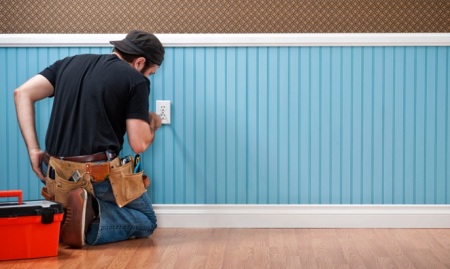Professional Electrical & Controls Ltd.: $99 for Inspection or $149 for Surge Protector with Installation (Up to 57% Off)
Today’s Groupon Edmonton Daily Deal of the Day: Professional Electrical & Controls Ltd.: $99 for Inspection or $149 for Surge Protector with Installation (Up to 57% Off)
Buy now from only $99
Value $199
Discount 50% Off
What You’ll Get
Choose Between Two Options
- $99 for one home safety inspection ($199 value)
- $149 for one home surge protector with installation ($344 value)
This is a limited time offer while quantities last so don’t miss out!
Click here to buy now or for more info about the deal.
The Fine Print
Promotional value expires 180 days after purchase. Amount paid never expires. Limit 1 per person, may buy 1 additional as gift. Valid only for option purchased. Service areas: Edmonton, St Albert, Spruce Grove, Stony Plain, Sherwood Park, Leduc May be repurchased every 30 days. Merchant is solely responsible to purchasers for the care and quality of the advertised goods and services.
Professional Electrical & Controls Ltd.
http://www.professionalelectrical.ca/
Residential Wiring: Controlling the Current
At any given moment, electricity is coursing through your walls to power your lamps, refrigerators, and extra refrigerators. Read our guide to some of the many different safeguards electricians rely on to safely power our homes.
The simplest components of a home’s electrical wiring are the wires themselves. If you cut open a standard sheathed electrical cable, you’d find several different wires, including:
At least one hot wire that carries power from the service panel to the outlet or device. Hot wires are usually black, but may be blue, red, or other colors as well.
A neutral wire, usually white, that carries power from the outlet or device back to the service panel (and eventually out of the building).
A ground wire, usually green or bare copper. Through the power grid, this low-resistance wire will be grounded, or connected to the earth, whose bulk can accept a great deal of charge without consequence.
Wires are rated at different gauges, or thicknesses, depending on how much electrical current they need to carry. It’s important to choose the right gauge of wire for a given circuit: even if its capacity is only off by 10 amps, it can overload, heat up, and cause a fire.
Backup systems also protect against wires overloading. Every outlet, fixture, and appliance in the home is part of a circuit that will shut off automatically via a circuit breaker if too much current starts to run through it. One specialized type of breaker, called an arc-fault circuit interrupter (AFCI), will also trip if it detects a discharge of energy called an arc fault, which can cause intense heat and fires. (An arc, in electrical parlance, is simply an electrical current transmitted through the air—for instance, if a wire forming part of a circuit were cut, the electricity would leap between the two bits of metal in the form of a spark, creating dangerous heat.) A ground-fault circuit interrupter (GFCI), which protects against electric shock, is usually installed on circuits that run close to water—for instance, the circuit that serves your bathroom probably has one. All of these breakers are located in a service panel that’s usually placed near where electricity initially enters the house.
Finally, modern three-hole outlets are structured to protect against the fallout from an electrical arc and form a friendly little face. Each hole in the outlet corresponds to one of the three basic types of wire. The smaller slot on the right side is connected to the hot wire, and the larger slot connects to the neutral one. The small, round hole beneath the two slots connects to the ground wire. This last connection makes the outlet safer because in case of an arc, the electricity will seize it as the fastest way to get to ground, rather than forging its own destructive path.
Click here to buy now or for more information about the deal. Don’t miss out!

